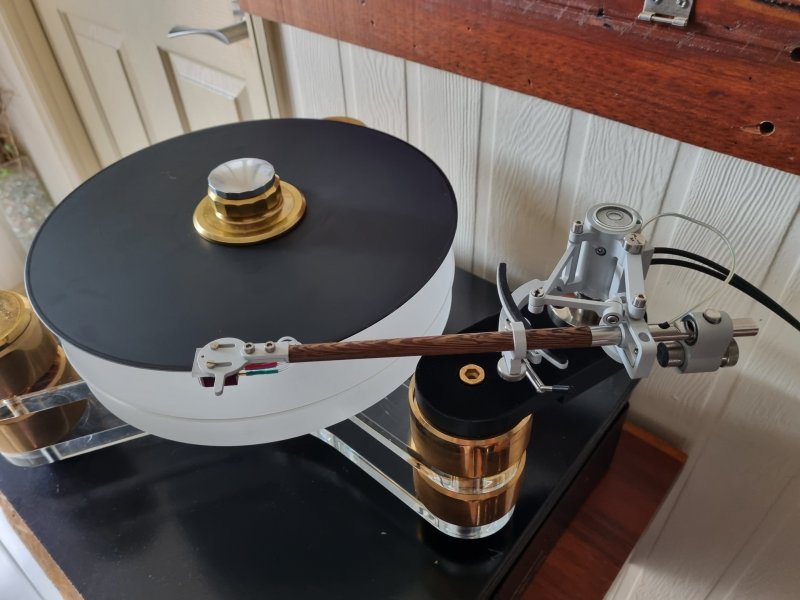Yes, I can now talk about the upgrade.
The Ypsilon VPS100 arrived first, we were using a Technics GL1000 or similar direct drive with a Groove Master 9" S-shaped tonearm, my Phasemation PP2000 MC cartridge and Phasemation T-2000 (stereo pair) SUT's to generate signal. The Ypsilon took the place of my Leben RS-30 EQ phono. The remaining bits were a 15 watt push pull Leben CS-300XS Integrated (which had the Sovtek's replaced with much better performing and much much better sounding NOS Amperex), Auditorium-23 cables, Thrax Lyra loudspeakers on stands that sit atop Townshend platforms.
Well, at first warm up I thought "what have I done"? How could they charge so much for this? But then I left it powered up for 8 hours and tried again. Now that's better. Presence and sound stage improvements were the most obvious improvements.
About 5 days later the Roy from Classic Turntable Company delivered my Reference turntable in person. The Garrard 301 motor and linkage attached to CNC machined brass chassis, a new heavy duty (and much tighter tolerance) bearing using watch oil for lubrication, and the UK equivalent of Panzerholz for the Plinth (for advantages see: https:
www.lessloss.com ). Without tonearm or platter, or Townshend seismic pods it still needed two to carry it upstairs (weighing around 100lbs). We put the pods underneath and Hugo Cass of Ammonite Audio assembled and attached the Reed 5A pivoted tangential arm, ditto the Phasemation PP-2000, then attached the Classic Turntable PSU, and then used his computer to dial in all the mounting parameters.
We put on the same record we listened to before the change (The Look of Love, single track, 33.3 RPM side, by Analogue Productions) and both Hugo and I had faces locked into a mix of pleasant surprise and incredulousness. Much much better. The sound stage was wider, deeper, and anchored in place. My audiophile recordings sounded great, however most of my everyday records, especially rock and roll, sounded harsh. Not easy to listen to. As a result, for the past week I have been playing certain tracks from certain LP's only.
Yesterday, I received the 30 watt per channel Ayon Spitfire Class A single ended triode amplifier from Kevin at Fi Audio in Scotland for a non-committal audition. Before swapping out the Leben integrated I played a tract from CSN&Y 4-way street for my wife, she made a face and said it sounded harsh, then left. I swapped out the amplification and listened again. Despite the amplifier being brand new and nowhere near broken in yet, the same song sounded smooth, no harshness. Then I noticed more air around the voices, sort of a heavenly presence (you know what I mean). The sound stage was not as obvious as before though, hi fi traits less obvious but music more enjoyable. Sat there and listened to complete album (it has been a long time since I have done that). Not just that one but several, one complete LP played, next one through the Degritter then onto the player and again, relaxed, eyes closed and enjoyment. Another thing I noticed, today, is I am turning this up too loud without realising it until I leave the room. I suspect that the previous amplifier distortion gave loudness clues that are lacking here with the Ayon.
Tomorrow Hugo Cass is bringing around another amplifier to audition based upon KT-88 valves. Not triode or Class A, but a lot more power which these speakers may be missing (rated 30-250 watts/4ohms). Will wait and see before deciding, but right now I am liking this combination with the Ayon.







